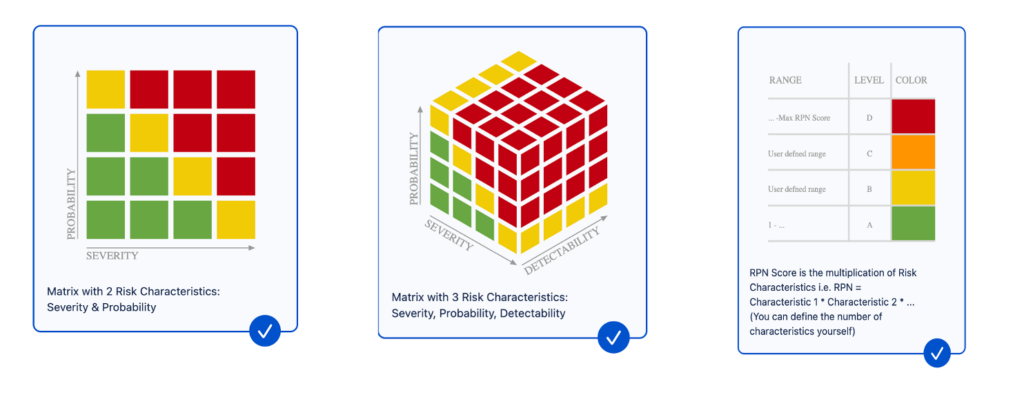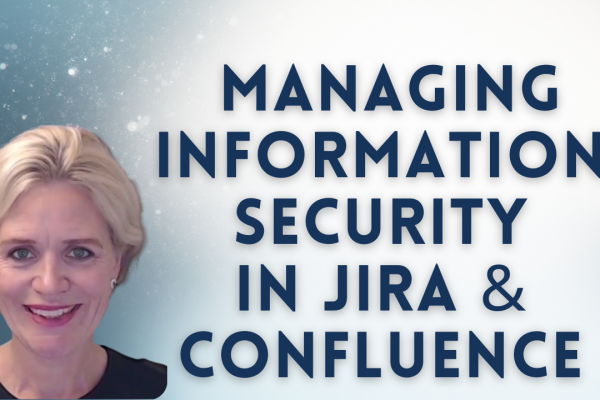Integrating risk management into the Software Development Lifecycle (SDLC) of a product is crucial to its success. It enhances the safety, security and reliability of your software product. When you identify, assess, and mitigate risks early, you can avoid bigger problems down the line.
Think of it as a systematic approach. You start by identifying potential risks as you are developing your software. This means looking at everything that could possibly go wrong, from technical issues of the product as well as project management up until the level of market changes. Next, you assess these risks to understand their potential impact on your project, product and organisation. Finally, you put strategies in place to mitigate risks that are critical and check if all mitigations are lowering the risk level as expected.
Why Integrate Risk Management to SDLC?

Incorporating risk management into your SDLC can save time and money by reducing rework and avoiding costly mistakes. It’s about keeping your project on track and delivering reliable software (Ref).
It also:
- Enhances product safety and security by design
Managing risks in the SDLC helps maintain high software quality. Implementing product safety and security into product design enhances these aspects in your software product. By addressing issues early, teams reduce the need for rework and ensure the final product meets quality standards (Ref). - Ensures regulatory compliance
Integrating risk management into the SDLC helps ensure that the software adheres to industry standards and regulations. This reduces the risk of legal issues and penalties (Ref). - Improves project predictability
Identifying risks early also helps in planning and allocating resources better. With a clear understanding of potential issues, teams can create more accurate project timelines and budgets (Ref). - Makes it easier to plan and allocate resources
When you spot risks early in the software development lifecycle, you can address them before they become bigger problems. This proactive approach saves time and resources (Ref). - Builds stakeholder confidence
Effective risk management builds trust with stakeholders. When they see that the team is proactively addressing potential issues, it enhances their confidence and support for the project (Ref). - Reduces project costs
Addressing risks early can save money. By identifying and mitigating risks at the start, you avoid the higher costs associated with fixing problems later in the development process (Ref). - Improves Organisational Decision-Making
Risk management provides valuable data that helps in making informed decisions. Teams can align their choices with business strategies, ensuring that the development process supports overall goals (Ref).
How to Integrate Risk Management in Different SDLC Phases?

Project Initiation and Planning Phase
In the beginning, identify and assess potential risks. You can do that by considering risks of similar products and vulnerabilities suggested in different international standards. Develop a risk management plan to address these issues early. This proactive approach sets the stage for the entire project (Ref).
Requirements Gathering and Analysis
During this phase, unclear requirements can lead to significant risks. Assess all risks that are related to identified requirements as well as the impact of misunderstood stakeholder needs. By doing this, you can avoid missteps that could derail the project later on (Ref).
Design Phase
Here, evaluate the risks associated with your architectural decisions. Make sure to consider security, safety and performance. This will help design and develop a more secure and safe product, and you can catch issues before they become major problems (Ref).
Development Phase
While coding, keep an eye on technical risks. When coding to mitigate risks, make sure to identify new ones that may arise as a result of it. Also, reassess risks after any changes. Regularly review your code for vulnerabilities. This step ensures that the software remains robust as it evolves (Ref).
Testing Phase
Identify risks related to test coverage. Evaluate the impacts of any defects found and justify any anomalies, if needed. This phase helps ensure that the software is reliable and ready for deployment (Ref).
Deployment and Maintenance
Finally, consider operational risks during deployment. Continuously monitor for new risks and vulnerabilities in production and reassess risks based on customer feedback and complaints. This ensures that the software remains stable and secure after launch (Ref).
What are the Most Important Practices in Risk Management?

Establish Traceability between Risks, Requirements and Tests
Effective risk management in software development involves linking requirements, risks, and tests. This ensures traceability between the three where each requirement has been analysed from the risk point of view, the identified risks have been mitigated by developing new code based on new requirements. Finally, tests have been linked to requirements ensuring that the risk mitigation actions (new requirements) are actually working, lowering the critical risks to acceptable level.
To ensure the traceability is established, you may want to create a traceability matrix, which is a requirement in the regulated domains. This matrix visualizes links between requirements, their associated risks and tests. It helps track the progress of addressing each requirement, making it easier to see what has been tested and what still needs attention (Ref).
Prioritize Risks for Mitigation
Define the risk acceptability and critical risk criteria first. Once you have assessed risks, focus on mitigating the critical risks first. By prioritizing the critical risks, you can address potential issues before they become significant problems. This approach saves time and resources in the long run (Ref).
You can also analyse and test the most critical functionalities of your software product first. By doing this, you ensure that the most significant risks are addressed first. This approach helps allocate resources efficiently and can save time and money (Ref). It will also reduce the chances of missing out on critical bugs and vulnerabilities (Ref).
Risk Mitigation in Agile Sprints
Incorporate risk assessment into your sprint planning. This involves identifying potential risks at each sprint and planning how to mitigate them. This proactive approach can keep your project on track and help avoid surprises later on. This also helps in communicating potential risks and risk management activities across your development team (Ref).
Continuous Risk & Proactive Vulnerability Monitoring
Use automated tools to keep an eye on risks throughout the project. These tools can alert you to new risks as they arise, allowing you to address them quickly. Continuous monitoring helps ensure that risks do not go unnoticed and can be managed promptly (Ref).
Managing Risks in Jira?
Integrating risk management into your software development lifecycle also means that you should manage risks in the same toolstack where you develop your software.
You can manage risks directly within Jira with the SoftComply Risk Manager Plus. This integration streamlines the risk management process, making it easier to track and address risks as part of your existing workflow (Ref).
SoftComply Risk Manager Plus is the highest rated and most advanced risk management app on Jira Cloud, offering support for:
- Comprehensive Risk and Customisable Risk Models
You can tailor the tool to fit your specific project needs (Ref). - Multiple Risk Assessment Methods
Risk Manager Plus supports various risk assessment methods, including Organisational, RAID, Safety, Security and Project Risk Management. - Customizable Risk Registers
You can work with risks in a spreadsheet format using fully editable risk registers. This makes it simple to organize and analyze risks in a familiar layout (Ref). - Information Security Management
SoftComply Risk Manager Plus supports ISO/IEC 27001 compliance. This dedicated module helps you maintain you asset-based risk management and comply with the information security management requirements in your organisation (Ref). - Assessing Security Vulnerabilities with CVSS
With the SoftComply Risk Manager Plus you can also score your security vulnerabilities based on the CVSS framework. This will help assess the risk posed by the vulnerabilities and take appropriate actions to mitigate them. - Risk Reporting in Confluence
SoftComply offers a free extentsion for risk reporting in Confluence. This allows you to generate and share risk reports quickly, keeping all stakeholders informed (Ref).
Conclusion
Integrating risk management into the Software Development Lifecycle (SDLC) is crucial. It helps in identifying, assessing, and mitigating risks early on. This approach ensures better project predictability, improved software quality, product safety and cost reduction. Effective risk management also boosts stakeholder confidence, prevents costly recalls and supports regulatory compliance.
Benefits of Risk Management in SDLC
- Better Project Predictability: Early identification and mitigation of risks lead to fewer surprises and more predictable outcomes.
- Improved Software Quality: Addressing risks proactively contributes to higher quality software.
- Cost Reduction: Early risk management helps avoid costly fixes later in the development process.
- Increased Stakeholder Confidence: Demonstrating a structured approach to risk management builds trust with stakeholders.
- Regulatory Compliance: Effective risk management supports adherence to industry regulations and standards.
Strategies for Effective Risk Management
- Focus on High-Risk Areas: Prioritize areas with the highest potential impact.
- Ensure Comprehensive Test Coverage: Ensure thorough testing to uncover potential issues early.
- Establish Traceability: Link risks to requirements and requirements to tests to make sure all risks are identified, analysed and mitigated.
Tools for Risk Management
SoftComply Risk Manager Plus:
- Integration: Works within Jira and Confluence.
- Compliance: Supports ISO/IEC 27001 and ISO 14971 compliance.
- Reporting: Generates detailed risk management reports in Jira Dashboard as well as in Confluence.
By embracing these practices and tools, teams can lead to more reliable and secure software development projects.
👉 Try SoftComply Risk Manager Plus for free for a month: https://marketplace.atlassian.com/apps/1219692/softcomply-risk-manager-plus-top-risk-management-in-jira?tab=overview&hosting=cloud
👉 Book a live demo: https://calendly.com/softcomply/softcomply-risk-manager-demo






